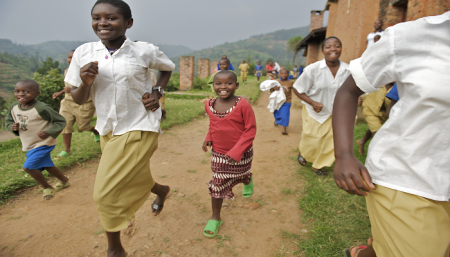curator
Administrator
The United Nations Children’s Fund (UNICEF) on Friday in New York said more than 850,000 infants have been saved from HIV infection since 2005.
UNICEF, in a report to the UN headquarters, said the situation called for greater action and investment in HIV and AIDS.
``AIDS-related deaths among people between the ages of 10 and 19 increased by 50 per cent between 2005 and 2012.
``The figure represented a jump from 71,000 to 110,000, a development which contrasted with the progress made in preventing mother-to-child transmission,’’ it said.
The report titled ``2013 Stock-taking Report on Children and AIDS’’ said there were some 2.1 million adolescents living with HIV in 2012, half of them in just six countries.
It said they are in South Africa, Nigeria, Tanzania, Kenya, India and Zimbabwe.
UNICEF however pointed out that in 2012, about two-thirds of new HIV infections in adolescents’ óf ages 15 to 19 were among girls.
The report also showed that by increasing investment in high-impact interventions to about 5.5 billion dollars by 2014, two million adolescents, particularly girls, could avoid becoming infected by 2020.
It, however, said that investments in 2010 stood at 3.8 billion dollars.
High-impact interventions include condoms, anti-retroviral treatment, prevention of mother-to-child transmission, voluntary medical male circumcision, communications for behaviour change, and targeted approaches for at-risk and marginalised populations.
``This is in addition to investments in other sectors such as education, social protection and welfare, and strengthening health systems,’’ the report quoted UNICEF’s Executive Director, Anthony Lake, as saying.
Earlier in the week, the World Health Organisation (WHO) had launched new recommendations to address the specific needs of adolescents living with HIV and those who are at risk of infection.
Among other things, the agency recommended that governments should review their laws to make it easier for adolescents to obtain HIV testing without needing consent from their parents.
The UN agency also suggested the ways in which health services could improve the quality of care and social support for adolescents.

UNICEF, in a report to the UN headquarters, said the situation called for greater action and investment in HIV and AIDS.
``AIDS-related deaths among people between the ages of 10 and 19 increased by 50 per cent between 2005 and 2012.
``The figure represented a jump from 71,000 to 110,000, a development which contrasted with the progress made in preventing mother-to-child transmission,’’ it said.
The report titled ``2013 Stock-taking Report on Children and AIDS’’ said there were some 2.1 million adolescents living with HIV in 2012, half of them in just six countries.
It said they are in South Africa, Nigeria, Tanzania, Kenya, India and Zimbabwe.
UNICEF however pointed out that in 2012, about two-thirds of new HIV infections in adolescents’ óf ages 15 to 19 were among girls.
The report also showed that by increasing investment in high-impact interventions to about 5.5 billion dollars by 2014, two million adolescents, particularly girls, could avoid becoming infected by 2020.
It, however, said that investments in 2010 stood at 3.8 billion dollars.
High-impact interventions include condoms, anti-retroviral treatment, prevention of mother-to-child transmission, voluntary medical male circumcision, communications for behaviour change, and targeted approaches for at-risk and marginalised populations.
``This is in addition to investments in other sectors such as education, social protection and welfare, and strengthening health systems,’’ the report quoted UNICEF’s Executive Director, Anthony Lake, as saying.
Earlier in the week, the World Health Organisation (WHO) had launched new recommendations to address the specific needs of adolescents living with HIV and those who are at risk of infection.
Among other things, the agency recommended that governments should review their laws to make it easier for adolescents to obtain HIV testing without needing consent from their parents.
The UN agency also suggested the ways in which health services could improve the quality of care and social support for adolescents.


